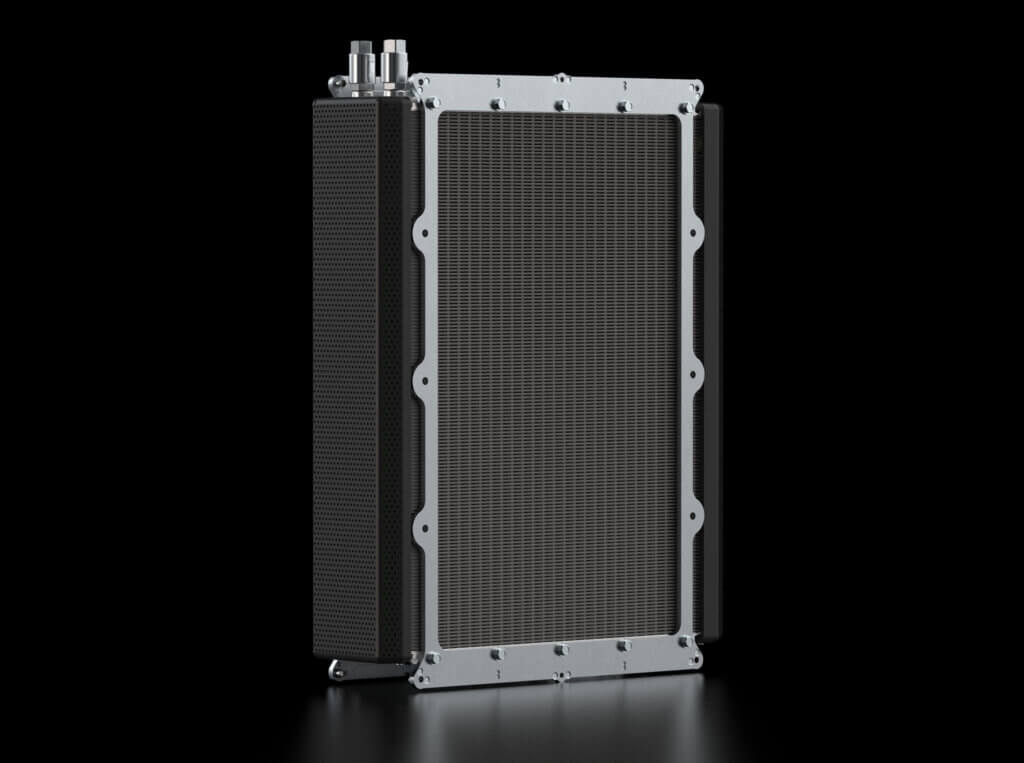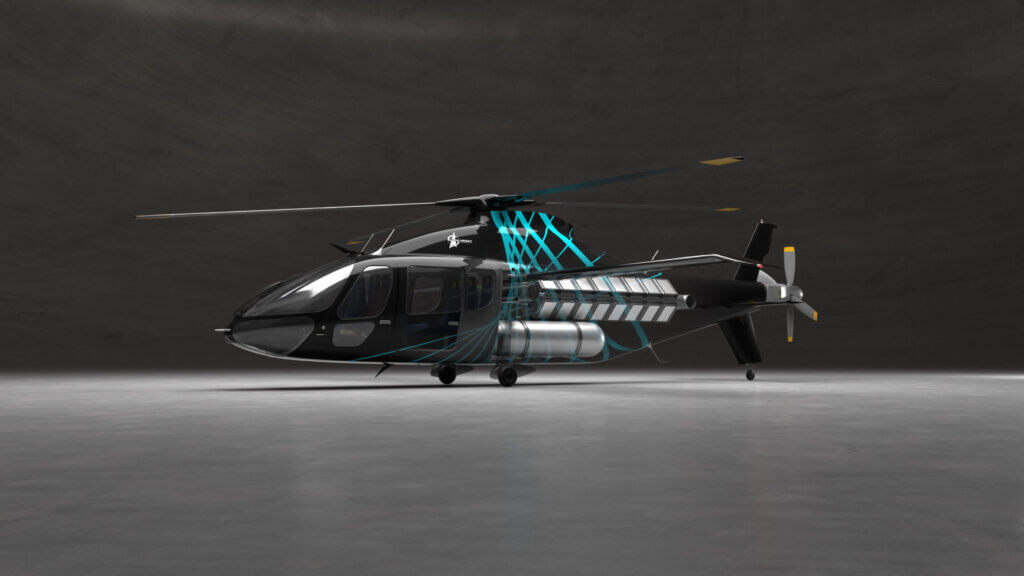Piasecki Aircraft Corp. is an independent aerospace company with a rich history in rotorcraft design and development. The Essington, Pennsylvania-based company is involved in several advanced programs for the civil and military sectors, which will expand the capabilities of today’s helicopters and eVTOL aircraft.
“Innovation depends on independent design houses that aren’t wedded to existing, long-term production programs and design concepts,” observed Richard Aboulafia, managing director of AeroDynamic Advisory, an aerospace consultancy. “Piasecki is easily the most important and experienced of these independent design houses.”
And Piasecki continues to evolve.

In May 2023, Piasecki acquired Lockheed Martin Sikorsky’s Heliplex in Coatesville, Pennsylvania. The 219,000-square-foot (20,345-square-meter) facility is being transformed into a research and development (R&D) center for vertical takeoff and landing aircraft and unmanned aircraft systems (UAS). Several of Piasecki’s programs will be moved to the new R&D facility in the coming months, and the company is putting out the welcome mat for engineers, designers, qualified mechanics and other employees. Piasecki plans to hire roughly 400 people over the next few years.
In October 2023, the U.S. Army awarded Piasecki and a partnership between Kaman Air Vehicles, a division of Kaman Corp., and Near Earth Autonomy Inc. contracts to develop a test drone for the Army’s Heavy Vertical Takeoff and Landing (HVTOL) program.
A month later, the U.S. Air Force’s AFWERX program awarded Piasecki a multi-year $37-million contract for work on the Aerial Reconfigurable Embedded System (ARES), part of the AFWERX’s Strategic Funding Increase (STRATFI) program. Piasecki is the prime contractor for several VTOL technologies — foremost is ARES, which is a tilt-duct configuration. The tilt-duct technology is more efficient than conventional helicopters, allowing for vertical-lift with a small footprint. Being able to operate in confined spaces like a ship’s deck is important. Tilt ducts are also multi-functional and can transition from hover into wing borne flight. The technology allows for greater range and high speeds than conventional aircraft.
“When these aircraft get to their objective, their small landing footprint enables them to land close to the ground combat units operating in complex terrain or urban environments where large open rotor helicopters can’t go,” said John Piasecki, CEO and president of Piasecki.
Piasecki continues work on the PA-890 all-electric slowed-rotor winged compound helicopter designed for multiple roles, including casualty evacuation (CASEVAC), medical evacuation (MEDEVAC), on-demand mobility and logistics (ODM/ODL) and air transport and commercial applications. CASEVAC involves transporting injured personnel from the battleground to medical facilities without accompanying medical staff, whereas MEDEVAC involves a team of medical professionals on standby when a patient is being transported to a facility.
The Defense Advanced Research Projects Agency (DARPA) awarded two programs to Piasecki. One is ANCILLARY, a maritime UAS program, and the other involves a flight demonstration with a high-speed VTOL demonstrator under DARPA’s SPRINT program. The 400-knot capable aircraft will be able to hover and operate out of austere fields. Six flight demonstrations are planned over the next 3.5 to four years.
The Army’s HVTOL program is being driven by recognition within the U.S. Army Futures Command for autonomous aerial logistics capabilities. One program requirement is to conduct a stage-gate lift of 500 pounds (225 kilograms) within a year of the contract award.
“We are developing the aircraft presently, focused on designing and fabricating hardware under a rapid prototyping program,” Piasecki said. “Once assembled, we will go through a series of ground testing. And take it to flight to meet that 500-lb [225-kg] stage-gate lift requirement.”
The ARES program has gone through several iterations. The concept was developed initially by Piasecki under an Army Small Business Innovative Research (SBIR) contract, then collaboratively with Lockheed Martin under the DARPA Transformer program.
ARES shut down under the Lockheed contract with DARPA for lack of funding. At that point, the project was transferred to Piasecki and funded by the Air Force through a series of small SBIR contracts to develop a new triplex flight control system with Honeywell. The success of these efforts led to the Air Force selecting the program for funding under the STRATFI initiative.

“We’re doing ground testing now in preparation for tethered hover flight tests later this year,” Piasecki said. “Then the aircraft will undergo a series of modifications followed by a full free flight test with the aircraft alone, and then with a cargo or evacuation transport pod.”
Current funding under STRATFI will enable flight demonstration of the ARES and testing of high-temperature proton exchange membrane (HT-PEM) hydrogen fuel cell technology.
Propulsion technology is an important component of STRATFI. This involves the development, fabrication and ground testing of a full-scale 660-kilowatt HT-PEM hydrogen fuel cell, which is essentially a battery with a fuel tank that combines hydrogen with oxygen to produce water vapor.
“Successful ground testing of the full-scale HT-PEM fuel cell will enable expansion of the test rig to incorporate dynamic propulsion and control system elements and serve as an iron bird for the PA-890, “Piasecki said.
A series of trade studies with input from launch customers on the PA-890 continues, as does dialogue with the Federation Aviation Administration (FAA) on the development of a certification standard, which will be aided by the upcoming HAXEL flight demonstration. The PA-890 has both civil and military applications, but the largest market will come from the commercial sector.
“The affordability and reduced operating costs of the PA-890 are two significant disruptive elements we want to deliver to the marketplace,” Piasecki said. “HT-PEM will have five times the energy density of lithium-ion batteries and three times the specific power of current low temperature fuel cells. We expect the hydrogen fuel cell to provide 50 percent lower operating costs compared to turbine-powered helicopters. Another benefit is that HT-PEM doesn’t need all the water management systems. It is a lot lighter, simpler and has higher energy density, [and] lower costs and complexity.”
Replacing the turbine with a hydrogen fuel cell will offer the biggest reduction in operating costs. Unloading the rotor onto a lifting wing and thrusting tail will reduce vibration fatigue loads through the aircraft.
This year, Piasecki will fly a proof-of-concept demonstrator called HAXEL, utilizing an 80-kW hydrogen fuel cell system on a two-passenger coaxial helicopter built by EDM Aerotec.
Piasecki is partnering with ZeroAvia, an American/British hydrogen-electric company, to develop a full-scale 660-kW hydrogen fuel cell propulsion system, and plans to validate the technology for the PA-890.
To date, ZeroAvia has raised around $260 million in capital to develop hydrogen fuel cell technology. In 2022, the company acquired Piasecki’s technology partner, HyPoint “to help us take hydrogen propulsion to the next level,” Piasecki said.
Hydrogen fuel cells are more efficient than burning hydrogen in a turbine-powered aircraft. While turbines are light, with a high power-to-weight ratio, they’re complex machines. About 50 percent of a helicopter’s operating cost comes from the turbine, whereas the hydrogen fuel cell has no moving parts. In addition, “the life of the hydrogen power plant is much longer and the costs associated with delivering the power is a lot lower,” Piasecki said. “Some of the big challenges with using hydrogen are not just the weight. There are also volumetric challenges. Onboard storage of hydrogen also has to be addressed.”

Pilots versus autonomy
A major concern about autonomous technology relates to the pilots’ diminished role. Could these advances make pilots extinct one day? What role will pilots have in the rotorcraft and eVTOL sectors as innovation continues?
“There are numerous missions that can be done by autonomous aircraft, such as small package delivery,” Piasecki said. “The opportunities vastly outweigh the operational costs because the role of the pilot is going to change. As we transition to digitally-enabled flight controls, the workload of the pilots will diminish.”
So too will training demands, which provide an opportunity for simplified vehicle operations (SVO). “Pilots will evolve into more of a supervisory role as a mission manager as opposed to keeping the aircraft in trim,” Piasecki added.
Artificial intelligence (AI) will help expand the pilot community by opening up vertical mobility to numerous operators, which “don’t have the time or funding to invest in the very rigorous stick and rudder training,” the CEO said.
As to the future of autonomous aircraft for civil and military missions, “I think you’re going to have variable autonomy, where the operator will have the choice of flying the aircraft or operating it in autonomous mode,” Piasecki said. “It’s inevitable because some missions will require the helicopter to go into harm’s way to do the job. CASEVAC is a perfect example. Or you might have a situation where the threat environment is too high to send a MEDEVAC crew and [you] use an unmanned aircraft system instead.”
Piasecki was more nuanced regarding the feasibility and future of a hybrid or electric-powered VTOL aircraft. “Battery-powered eVTOL aircraft have limited applications because the aircraft does not have the energy capacity needed to support the full range of vertical-lift missions. Turbines will be around for a long time because you cannot beat the energy density.”
As for hybrid-powered aircraft, “we didn’t see the advantage of a hybrid aircraft, although an aero-diesel engine coupled with a generator showed some promise,” Piasecki said. “Even when you go hybrid, you still have the high cost of the turbine and its added weight.”
Regarding quiet technology for conventional fuel-powered rotorcraft, Piasecki said “we will be flying a turbine-powered super quiet rotorcraft in the coming year. The aircraft was originally developed for special operations missions. I cannot comment further.”
Milestones
■ 1940: Piasecki starts Piasecki-Venzie Engineering Forum
■ 1943: First flight of the PV-2 single-seat, single-rotor helicopter, piloted by Frank Piasecki
■ 1945: First flight of the XHRP-X tandem rotor helicopter
■ 1946: Company renamed Piasecki Helicopter Corporation
■ 1947: First flight of the Piasecki HRP-1
■ 1955: Piasecki Aircraft Corporation (PiAC) founded
■ 1956: Frank Piasecki leaves Piasecki Helicopter Corp., which is renamed Vertol
■ 1958: First flight of the Piasecki VZ-8P Airgeep 1
■ 1960: Boeing acquires Vertol
■ 1962: First flight of the Piasecki 16H Pathfinder high-speed compound helicopter
■ 1965: First flight of the Piasecki 16H-1A Pathfinder II high-speed compound helicopter
■ 1986: First flight of the Piasecki Helistat heavy-lift aircraft
■ 2005: Company selected by U.S. Army for two Future Combat Systems (FCS) UAV systems
■ 2006: The FCS Class III UAV system contract is awarded to Piasecki, which flew the world’s first autonomous autogiro as part of that program. Also that year, the U.S. Navy’s Naval Air Systems Command awards demonstration contract to Piasecki to validate the vectored thrust ducted propeller system
■ 2007: First flight of the Piasecki X-49 SpeedHawk twin-engine compound helicopter
■ 2008: Frank Piasecki passes






Amazing history